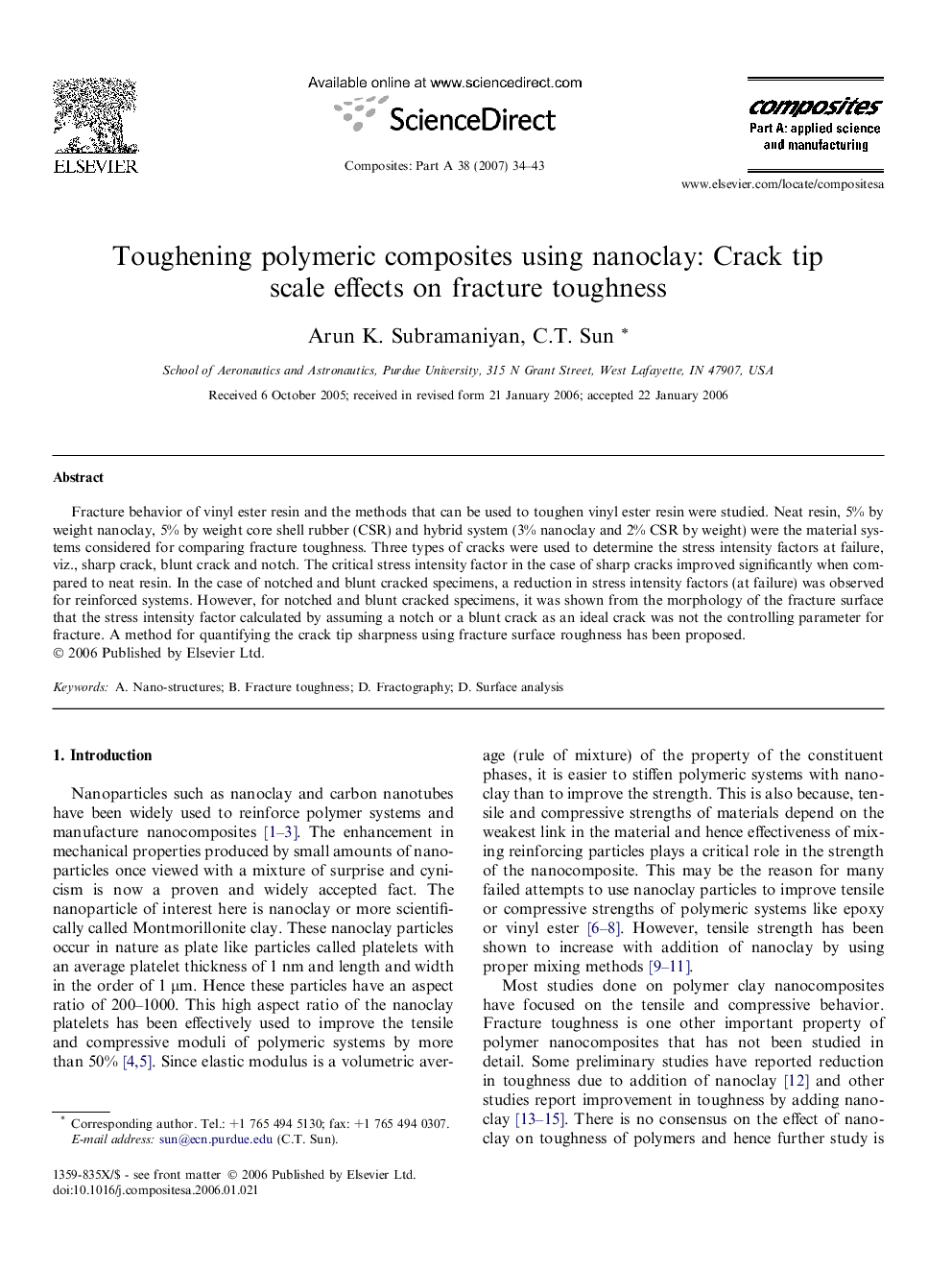| Article ID | Journal | Published Year | Pages | File Type |
|---|---|---|---|---|
| 1467709 | Composites Part A: Applied Science and Manufacturing | 2007 | 10 Pages |
Fracture behavior of vinyl ester resin and the methods that can be used to toughen vinyl ester resin were studied. Neat resin, 5% by weight nanoclay, 5% by weight core shell rubber (CSR) and hybrid system (3% nanoclay and 2% CSR by weight) were the material systems considered for comparing fracture toughness. Three types of cracks were used to determine the stress intensity factors at failure, viz., sharp crack, blunt crack and notch. The critical stress intensity factor in the case of sharp cracks improved significantly when compared to neat resin. In the case of notched and blunt cracked specimens, a reduction in stress intensity factors (at failure) was observed for reinforced systems. However, for notched and blunt cracked specimens, it was shown from the morphology of the fracture surface that the stress intensity factor calculated by assuming a notch or a blunt crack as an ideal crack was not the controlling parameter for fracture. A method for quantifying the crack tip sharpness using fracture surface roughness has been proposed.
